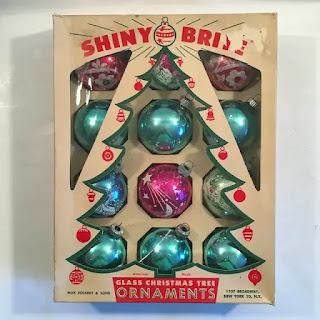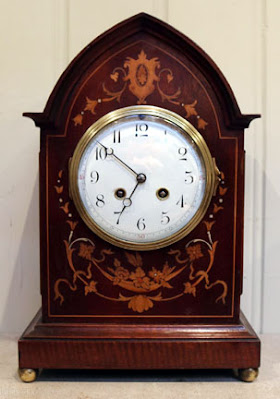 QUESTION: My introduction to Russian nesting dolls occurred on a trip to Russia. Vendors selling wooden dolls in a variety of sizes and themes seemed to be everywhere. I purchased several sets of dolls and would perhaps like to collect them. When and where did they originate? Are they valuable? And are there different kinds?
QUESTION: My introduction to Russian nesting dolls occurred on a trip to Russia. Vendors selling wooden dolls in a variety of sizes and themes seemed to be everywhere. I purchased several sets of dolls and would perhaps like to collect them. When and where did they originate? Are they valuable? And are there different kinds?
ANSWER: Those are all good questions. First, the correct name for your Russian nesting dolls is Matryoshka dolls. And while they’re commonly associated with Russia, they didn’t originate there.
A professional artist and folk crafts painter named Sergei Malyutin, who worked on the Abramtsevo estate of Savva I. Mamontovas, as a Russian industrialist, made the first sketches of a nesting doll based on a nesting toy featuring the Seven Gods of Fortune his wife brought home from a visit to Honshu, Japan, in the latter part of the 19th century. However, the Japanese say that it was a Russian monk who first brought the idea of making nesting dolls to Japan.
 Zvyozdochkin carved the first Russian nested doll set in 1890 at the Children's Education Workshop, created to make and sell children’s toys. Mamontov's brother, Anatoly Ivanovich created the Children's Education Workshop to make and sell children's toys. Malyutin painted the doll set which consisted of eight dolls—the outermost of which was a mother dressed in a kerchief and work apron holding a red-combed rooster. The inner dolls were her children, girls and a boy, and the innermost a baby. Each carried items of Russian peasant life—a basket, a sickle, a bowl of porridge, a broom, and a younger sibling in tow. Nestled in the center was a baby swaddled in a patchwork quilt. The toy workshop named her Matryoshka, or “little mother.” When the Children's Education Workshop closed in the late 1890s, the tradition of the matryoshka dolls relocated to Sergiyev Posad, the Russian city known as a toy-making center since the 14th century.
Zvyozdochkin carved the first Russian nested doll set in 1890 at the Children's Education Workshop, created to make and sell children’s toys. Mamontov's brother, Anatoly Ivanovich created the Children's Education Workshop to make and sell children's toys. Malyutin painted the doll set which consisted of eight dolls—the outermost of which was a mother dressed in a kerchief and work apron holding a red-combed rooster. The inner dolls were her children, girls and a boy, and the innermost a baby. Each carried items of Russian peasant life—a basket, a sickle, a bowl of porridge, a broom, and a younger sibling in tow. Nestled in the center was a baby swaddled in a patchwork quilt. The toy workshop named her Matryoshka, or “little mother.” When the Children's Education Workshop closed in the late 1890s, the tradition of the matryoshka dolls relocated to Sergiyev Posad, the Russian city known as a toy-making center since the 14th century.
 intended his doll to depict a round-faced peasant girl with beaming eyes. He dressed her in a sarafan—a floor-length traditional Russian peasant jumper dress held up by two straps—and gave her carefully styled slicked-down hair largely hidden under a colorful babushka or bandanna. He placed other figures, either male or female, each smaller then the one before, inside the largest doll, dressing them in kosovorotkas, or Russian blouses fastened on one side, shirts, poddyovkas, or men’s long-waisted coats, and aprons. He planned to have the smallest, innermost doll, traditionally a baby, turned from a single piece of wood.
intended his doll to depict a round-faced peasant girl with beaming eyes. He dressed her in a sarafan—a floor-length traditional Russian peasant jumper dress held up by two straps—and gave her carefully styled slicked-down hair largely hidden under a colorful babushka or bandanna. He placed other figures, either male or female, each smaller then the one before, inside the largest doll, dressing them in kosovorotkas, or Russian blouses fastened on one side, shirts, poddyovkas, or men’s long-waisted coats, and aprons. He planned to have the smallest, innermost doll, traditionally a baby, turned from a single piece of wood.
 Each wooden doll contained symbols of fertility. Doll makers considered the largest doll the matriarch of the family, while they referred to the smallest as the “seed,”’ representing the soul. They’re seen as a representation of a chain of mothers carrying on the family legacy through the child in their womb. Dolls soon became a major export as a Russian souvenir. Non-Russian buyers believed they were authentic handmade folk art.
Each wooden doll contained symbols of fertility. Doll makers considered the largest doll the matriarch of the family, while they referred to the smallest as the “seed,”’ representing the soul. They’re seen as a representation of a chain of mothers carrying on the family legacy through the child in their womb. Dolls soon became a major export as a Russian souvenir. Non-Russian buyers believed they were authentic handmade folk art.
 Mamontov's wife presented the doll set at the Exposition Universelle in Paris in 1900, where they won a bronze medal. Soon after, craftsmen in several other Russian towns began making them and shipping them around the world.
Mamontov's wife presented the doll set at the Exposition Universelle in Paris in 1900, where they won a bronze medal. Soon after, craftsmen in several other Russian towns began making them and shipping them around the world.
So where did the name for these dolls originate? At the end of 19th century, Matrena was one of the popular female names in Russia. Derived from the Latin root matrena, it means, "mother," “respected lady," or "mother of the family." Placing one figure inside another was also a fitting symbol of fertility and perpetuation. People also referred to these dolls as "babushka dolls," "babushka" meaning "grandmother" or "elderly woman" and also the name of the bandana worn by peasant women at the time.
But matryoshka dolls required a lot of skill to produce. Those who did know how to fashion these dolls kept the process a secret.
 Artisans generally chose linden wood because of its softness, and less often alder or birch. It was important to cut the wood at the right time, when it was neither too dry nor too damp. Each piece went through as many as 15 separate processes. The craftsman created the smallest doll first.
Artisans generally chose linden wood because of its softness, and less often alder or birch. It was important to cut the wood at the right time, when it was neither too dry nor too damp. Each piece went through as many as 15 separate processes. The craftsman created the smallest doll first.
Once he had made the smallest doll, he then moved on to the next figure into which that first doll would fit. He cut a piece of wood to the necessary height, then cut it in half to form a top and bottom section. He worked on the bottom section of the doll first, removing the wood from the inside of both sections of the second doll so that the smaller doll would fit snugly inside. A skilled craftsman didn’t bother to make measurements but relied solely on his experience. Afterwards, he repeated the process, making a slightly larger doll into which the previous ones would fit.
 Some people believed that a craftsman carved all the dolls in a set from one piece of wood. Actually, he used a lathe equipped with a balance bar and four heavy two-foot-long distinct types of chisels—a hook, knife, pipe, and spoon—to carve the dolls from multiple pieces of wood, using a set of handmade wooden calipers especially crafted to the size of the doll by a woodcarver. A village blacksmith hand forged these tools from car axles or other salvage.
Some people believed that a craftsman carved all the dolls in a set from one piece of wood. Actually, he used a lathe equipped with a balance bar and four heavy two-foot-long distinct types of chisels—a hook, knife, pipe, and spoon—to carve the dolls from multiple pieces of wood, using a set of handmade wooden calipers especially crafted to the size of the doll by a woodcarver. A village blacksmith hand forged these tools from car axles or other salvage.
The number of dolls held one inside the other varied from 2 to 60. There was no limit to the size of these dolls. When the craftsman finished each doll, he covered it with starchy glue that filled in any hollow areas in its surface. Then he polished the dolls to a smooth finish to enable the painter to spread the paint evenly. After fashioning and finishing the wooden dolls, the craftsman handed it on to a painter who then decorated them in a folksy style.
 Much of the artistry was in the painting of each doll. Some were very elaborate. The dolls often followed a theme which could vary from fairy tale characters to Soviet leaders. Originally, doll makers used themes drawn from tradition or fairy tale characters, in keeping with the craft tradition. But since the 20th century, they have embraced a larger range, including flowers, churches, icons, folk tales, family themes, religious subjects, and even Soviet and American political leaders.
Much of the artistry was in the painting of each doll. Some were very elaborate. The dolls often followed a theme which could vary from fairy tale characters to Soviet leaders. Originally, doll makers used themes drawn from tradition or fairy tale characters, in keeping with the craft tradition. But since the 20th century, they have embraced a larger range, including flowers, churches, icons, folk tales, family themes, religious subjects, and even Soviet and American political leaders.
Makers of matryoshka dolls often designed them to follow a particular theme. For instance, peasant girls in traditional dress. Originally, they took themes from traditional folk art or fairy tale characters, in keeping with the craft tradition—but since the late 20th century, they have embraced a larger range, including Russian leaders.
 Common themes of matryoshkas were floral and related to nature. Christmas, Easter, and others religious subjects were also popular themes. Eventually, the dolls became popular souvenirs for both Russian tourists and visitors from abroad. Artisans created many new styles of nesting dolls to fill this new market. These included animal collections, portraits, and caricatures of famous politicians, musicians, athletes, astronauts, "robots", and popular movie stars.
Common themes of matryoshkas were floral and related to nature. Christmas, Easter, and others religious subjects were also popular themes. Eventually, the dolls became popular souvenirs for both Russian tourists and visitors from abroad. Artisans created many new styles of nesting dolls to fill this new market. These included animal collections, portraits, and caricatures of famous politicians, musicians, athletes, astronauts, "robots", and popular movie stars.
The craft of making Matryoshka dolls gradually spread from Moscow to other cities and towns, including Semenov, Polkhovskiy Maidan, Vyatka, and Tver. Each locality developed its own style and form of decoration.
As with other crafts, the Russian Government under Communism strictly controlled doll making and selling. But political changes at the end of the 1980s gave artisans new possibilities and freedoms.
To read more articles on antiques, please visit the Antiques Articles section of my Web site. And to stay up to the minute on antiques and collectibles, please join the over 30,000 readers by following my free online magazine, #TheAntiquesAlmanac. Learn more about "The Age of Photography" in the 2023 Holiday Edition, online now. And to read daily posts about unique objects from the past and their histories, like the #Antiques and More Collection on Facebook.












































